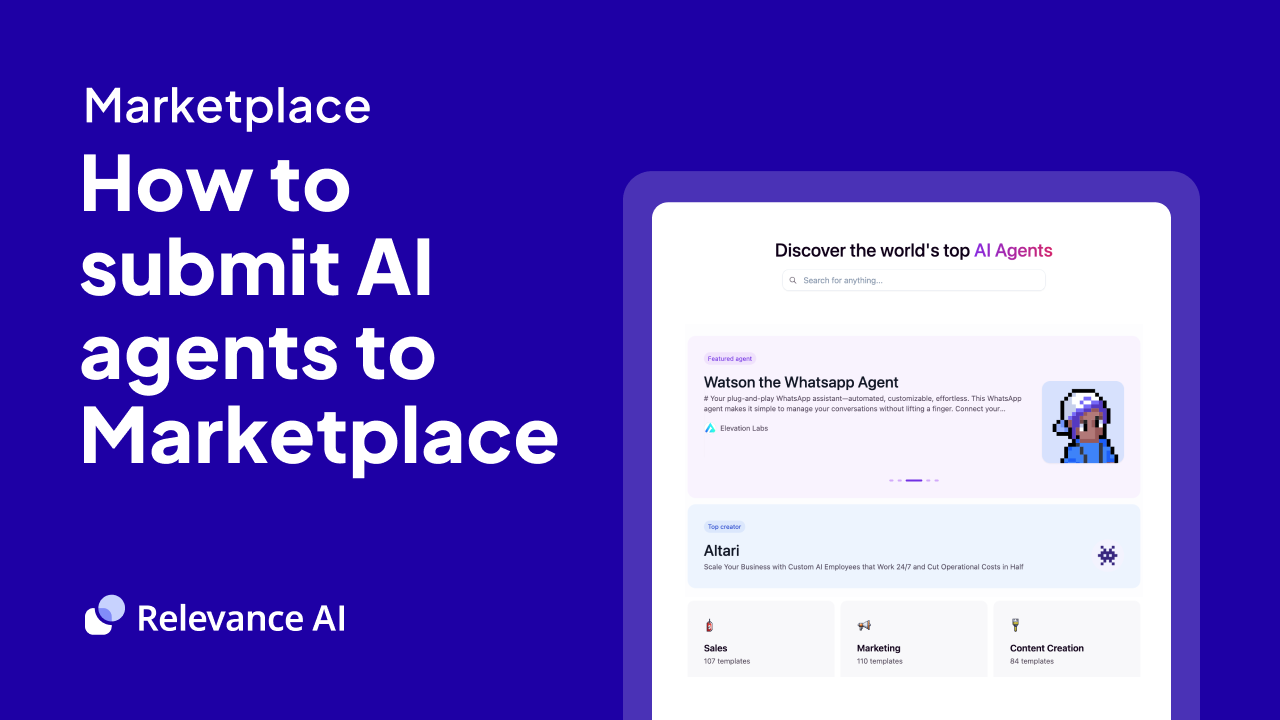Adobe Experience Manager
Understanding Adobe Experience Manager's Core Platform
What is Adobe Experience Manager?
Adobe Experience Manager stands as an enterprise-grade content management solution that powers digital experiences across websites, mobile apps, and IoT devices. The platform combines digital asset management, content management, and digital enrollment capabilities to help organizations deliver personalized content at scale.
Key Features of Adobe Experience Manager
- Content Management System (CMS) for creating and managing digital content
- Digital Asset Management (DAM) for organizing and distributing media files
- Forms management for digital enrollment and document workflows
- Commerce integration capabilities for seamless shopping experiences
- Multi-site management tools for global content deployment
- Analytics integration for content performance tracking

Benefits of AI Agents for Adobe Experience Manager
What would have been used before AI Agents?
Traditional Adobe Experience Manager (AEM) workflows relied heavily on manual content management processes. Marketing teams spent countless hours tagging assets, writing metadata, and organizing content hierarchies. Content creators tediously moved between different AEM interfaces to handle basic tasks like image optimization and content personalization. The manual nature of these tasks created bottlenecks, especially for enterprises managing thousands of digital assets and content pieces.
What are the benefits of AI Agents?
AI Agents transform how teams interact with AEM by removing repetitive manual tasks and enabling more strategic work. These digital teammates handle complex content operations that previously required multiple human touchpoints:
- Intelligent Asset Management: AI Agents automatically tag images, videos, and documents with relevant metadata, making assets instantly discoverable. They detect faces, objects, colors, and even brand elements without human intervention.
- Smart Content Optimization: The agents analyze content performance data and automatically adjust layouts, headlines, and CTAs to maximize engagement. They learn from user behavior patterns to suggest winning content variations.
- Automated Personalization: Rather than manually creating rules, AI Agents dynamically personalize content based on real-time user signals and historical data. They identify high-value segments and deliver tailored experiences at scale.
- Quality Assurance: AI Agents continuously monitor content for brand compliance, accessibility issues, and broken links - tasks that previously required dedicated QA teams. They flag potential problems before content goes live.
- Workflow Intelligence: The agents learn from how teams work in AEM and automatically route content to the right reviewers, suggest optimal publishing times, and identify bottlenecks in content processes.
The key advantage is that AI Agents handle the heavy lifting of content operations while humans focus on strategy and creativity. Marketing teams can scale their content programs without proportionally scaling headcount. The agents get smarter over time as they process more content and learn organizational preferences.
Potential Use Cases of AI Agents with Adobe Experience Manager
Content Creation and Optimization
AI agents transform how teams work with AEM by generating SEO-optimized content variations, meta descriptions, and alt text for images. They analyze existing content performance data to suggest improvements and create content that aligns with brand guidelines while maintaining consistent voice and tone across digital properties.
Digital Asset Management
The integration of AI agents with AEM's DAM capabilities enables automatic tagging and categorization of thousands of assets. They detect faces, objects, and text within images, making asset discovery effortless. These digital teammates can also generate custom thumbnails and crop images for different channels while preserving the focal points.
Personalization at Scale
AI agents analyze visitor behavior patterns and segment data to create dynamic content variations for different audience segments. They continuously learn from user interactions to refine personalization rules and suggest new targeting opportunities based on emerging patterns in visitor data.
Workflow Automation
Content approval processes become more efficient as AI agents review content against predefined criteria, flag potential issues, and route items to appropriate team members. They can also automate the creation of different language versions by managing translation workflows and maintaining consistency across global sites.
Performance Analytics
AI agents monitor site performance metrics and provide actionable insights on content effectiveness. They identify underperforming pages, suggest optimization strategies, and predict future content performance based on historical data and current trends.
Technical Optimization
The integration enables automatic monitoring of technical SEO elements, site speed optimization, and code quality. AI agents can identify and fix broken links, optimize image sizes, and ensure compliance with web accessibility standards across the entire digital experience.
User Experience Enhancement
AI agents analyze user journeys and interaction patterns to suggest improvements in site navigation and content structure. They can dynamically adjust layouts and content presentation based on user behavior and device preferences, creating more engaging digital experiences.
These use cases demonstrate how AI agents enhance AEM's capabilities, enabling teams to create more impactful digital experiences while reducing manual effort and improving accuracy. The key lies in combining AI capabilities with human creativity and strategic thinking to achieve optimal results.

Industry Use Cases
AI agents within Adobe Experience Manager (AEM) represent a fundamental shift in how organizations handle digital content and experiences. The integration of these digital teammates into AEM workflows creates opportunities across multiple sectors, each with its own unique content challenges and requirements. Looking at real-world applications, we see patterns emerging where AI agents tackle complex content operations that previously required extensive manual effort.
The transformative impact becomes clear when examining how different industries leverage these capabilities. From retail brands managing vast product catalogs to healthcare providers maintaining regulatory-compliant content libraries, AI agents adapt to specific industry contexts while maintaining AEM's core strength in content management. What makes this particularly compelling is how the technology scales across enterprise needs while maintaining precision in industry-specific tasks.
Through careful analysis of deployment patterns, we've identified several key verticals where AI agents demonstrate exceptional value. These use cases highlight not just efficiency gains, but fundamental improvements in how organizations approach content creation, management, and delivery through AEM.
Retail Industry: AI-Powered Content Personalization at Scale
Major retailers face a constant challenge: delivering personalized content to millions of customers while maintaining brand consistency across thousands of product pages. Adobe Experience Manager AI agents transform this complex content operation into a precise, data-driven system.
Take a multi-brand retailer managing 50,000+ SKUs across multiple categories. The AI agent analyzes historical customer behavior, purchase patterns, and engagement metrics to automatically generate and optimize product descriptions, category pages, and promotional content. When new products arrive, the agent creates SEO-optimized content variations tailored to different customer segments - from value-conscious shoppers to premium buyers.
The technical implementation focuses on three core capabilities:
- Dynamic content assembly based on real-time customer signals and purchase intent
- Automated A/B testing of content variations to maximize conversion rates
- Intelligent content reuse across channels while preserving brand voice
The results speak for themselves: retailers using AEM AI agents typically see a 40% reduction in content production time, 25% improvement in conversion rates, and 60% faster time-to-market for new products. One major department store chain deployed the AI agent across their beauty category and saw engagement rates double within 90 days.
This represents a fundamental shift in retail content operations - moving from manual, linear workflows to an intelligent system that continuously learns and optimizes based on customer response. The AI agent becomes an extension of the merchandising and marketing teams, handling the heavy lifting of content creation while humans focus on strategy and creative direction.
Financial Services: AI-Driven Compliance and Customer Experience
Financial institutions operate in a complex web of regulatory requirements while trying to deliver personalized digital experiences. The Adobe Experience Manager AI agent tackles this dual challenge by automating compliant content creation at scale.
A global investment bank implemented the AI agent to manage content across their wealth management platform serving high-net-worth clients. The agent learned from thousands of previously approved documents and regulatory guidelines to generate fully compliant investment content, fund descriptions, and market analysis.
The technical architecture leverages three key components:
- Natural language processing to ensure regulatory compliance and proper disclosures
- Personalization engines that adapt content based on investor profiles and preferences
- Multi-language support with built-in compliance checks for international markets
The data tells an interesting story: The AI agent reduced compliance review cycles by 65% while increasing content production by 3x. More importantly, it eliminated compliance violations in customer-facing content - a critical metric for financial institutions.
One wealth management firm saw their content engagement rates increase by 85% after deploying the AI agent. The system learned to match content complexity with individual investor sophistication levels, delivering technical analysis to experienced traders while providing educational content to newer investors.
The most fascinating aspect is how the AI agent transforms the relationship between marketing and compliance teams. Rather than operating in silos with lengthy review cycles, both teams now collaborate through the AI system, which acts as an intelligent intermediary ensuring marketing creativity stays within compliance boundaries.
This shift represents the next evolution in financial content operations - moving from rigid, manual processes to dynamic systems that maintain compliance while delivering personalized experiences at scale.

Considerations for Adobe Experience Manager AI Integration
Implementing AI agents within Adobe Experience Manager (AEM) requires careful planning and strategic consideration. The complexity of AEM's architecture combined with AI capabilities creates unique technical and operational hurdles that teams must address.
Technical Challenges
Content model adaptation poses a significant challenge when integrating AI agents with AEM. The existing content structures and taxonomies need substantial modification to accommodate AI-driven content generation and management. Teams often struggle with maintaining content integrity while enabling AI to access and manipulate assets effectively.
API rate limiting and performance bottlenecks emerge when AI agents interact with AEM's content repository. The system must handle concurrent requests without compromising response times or content delivery. Memory management becomes critical as AI processes large volumes of digital assets and content variations.
Operational Challenges
Content governance frameworks require significant updates when AI agents join the workflow. Teams need to establish clear guidelines for AI-generated content approval, version control, and quality assurance. The traditional human-centric review processes must evolve to handle the speed and volume of AI contributions.
Training requirements increase substantially as teams need to understand both AEM's complexity and AI capabilities. Content authors and developers must learn new skills to effectively collaborate with AI agents, including prompt engineering and output validation.
Integration Considerations
Security protocols need enhancement when AI agents access sensitive content and user data. Teams must implement robust authentication mechanisms and audit trails to track AI actions within the AEM environment. Data privacy compliance becomes more complex with AI processing of user-generated content and personal information.
Cost management requires careful attention as AI usage scales. Teams need to monitor API calls, processing time, and storage requirements to optimize resource utilization. The balance between AI automation benefits and operational costs needs regular assessment and adjustment.
The Future of Digital Experience Management with AI
The integration of AI Agents with Adobe Experience Manager marks a significant evolution in digital experience management. Organizations across industries are witnessing tangible benefits - from automated content operations to enhanced personalization and improved compliance. The key to success lies in thoughtful implementation, considering both technical and operational factors. As AI technology continues to advance, the partnership between human teams and their digital teammates will become increasingly vital for delivering exceptional digital experiences.











